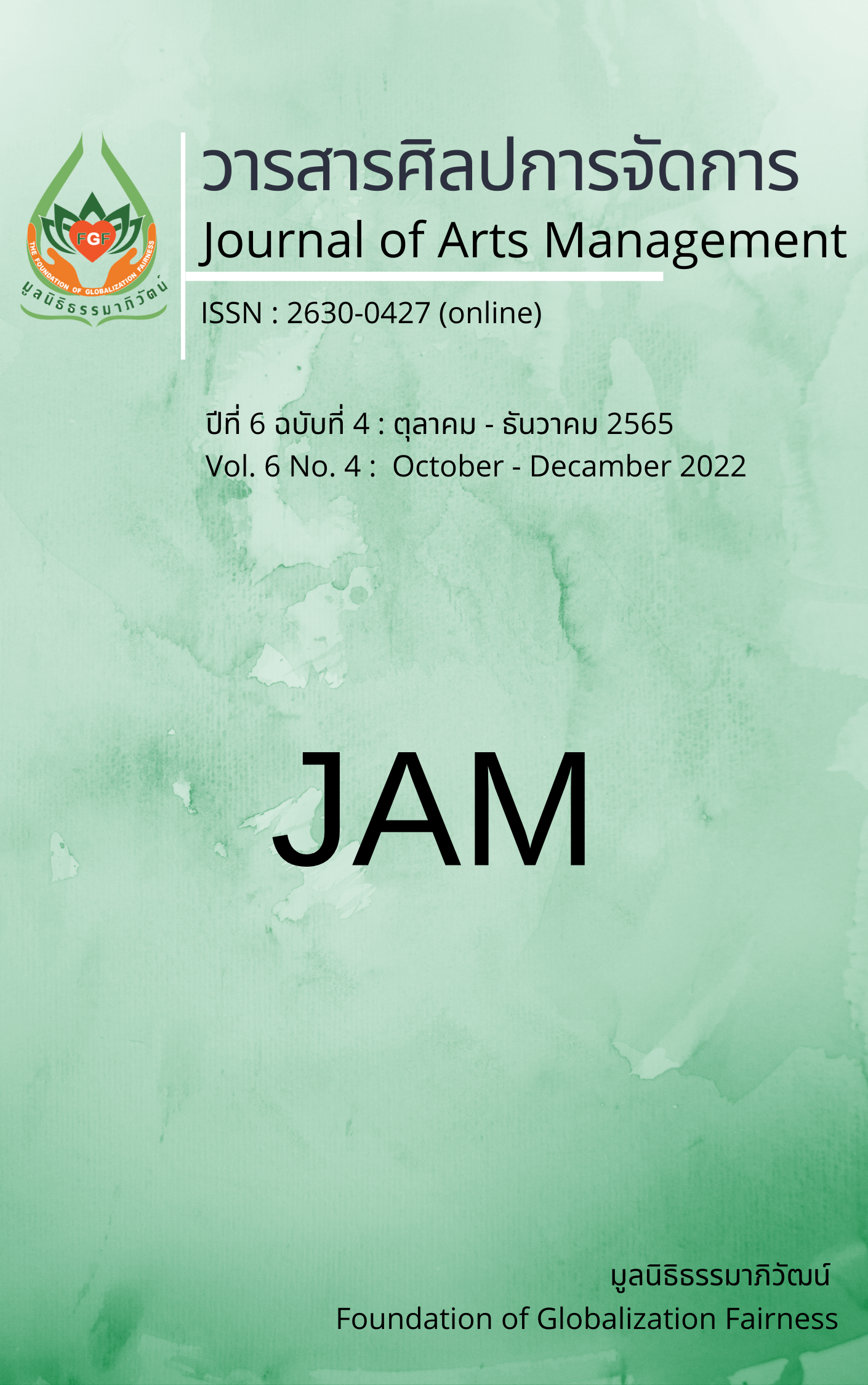Developing the Wildlife Tourism Routes in the Natural World Heritage Area of Dong Phayayen-Khao Yai
Main Article Content
Abstract
This article aimed to 1) assess the resource potential for supporting wildlife tourism in the Natural World Heritage Area of Dong Phayayen-Khao Yai and 2) develop the wildlife tourism routes in the Natural World Heritage Area of Dong Phayayen-Khao Yai. The data were collected using the resource potential assessment form for supporting wildlife tourism and were statistically analyzed using frequency and percentage. The assessment of tourism resource potential in six locations revealed that Nong Phak Chi Wildlife Watching Tower and Khao Yai National Park had the highest total score, followed by the viewpoint at kilometer 30 (Route 2090). As for the Butapod Wildlife Watching Tower of Pang Sida National Park and the Thung Krating Wildlife Watching Tower of Ta Phraya National Park, the resource potential scores were at moderate levels. Meanwhile, Pha Men of Thap Lan National Park had an inappropriate resource potential score of 45.3%. Regarding the study of wildlife tourism routes in the Natural World Heritage Area of Dong Phayayen-Khao Yai, it was found that the designs of wildlife tourism route 1 (the Big Five Wildlife Tourism Route, the Natural World Heritage Area of Dong Phayayen-Khao Yai, 4 days and 3 nights stay), route 2 (Bird Watching of Khao Yai National Park, day trip), and Route 3 (Butterfly Watching of Pang Sida National Park) had 8 attractions that had potential to connect tourism inside the national park.
Article Details

This work is licensed under a Creative Commons Attribution-NonCommercial-NoDerivatives 4.0 International License.
Views and opinions appearing in articles in the Journal of Arts of Management It is the responsibility of the author of the article. and does not constitute the view and responsibility of the editorial team I agree that the article is copyright of the Arts and Management Journal.
References
Brockmeyer, F. M., Bowman, M. L., & Mullins, G. (1983). Sensory versus non-sensory interpretation, Journal of Environmental Education, 14, 3-7.
Dickman, S. (1996). Tourism: An Introductory Text. Hodder Education.
Hall, C.M., & Welier, B. (1992). Introduction: What's So Special about Special Interest Tourism. In B. Weiler & C.M. Hall (Eds.), Special Interest Tourism, Belhaven Press.
Higginbottom, K. (2004). Wildlife tourism: Impacts, management and planning. Common Ground Publishing.
Jefferies, K., & Lepp, A. (2012). An investigation of extraordinary experiences. Journal of Parks and Recreation Administration, 30(3), 37-51.
Kim, J.-H., Ritchie, J. R., & McCormick, B. (2012). Development of a scale to measure memorable tourism experiences. Journal of Travel Research, 51(1), 12–25. https://doi.org/10.1177/0047287510385467
Kruger, M., & Saayman, M. (2012). Creating a memorable spectator experience at the Two Oceans Marathon. Journal of Sport & Tourism, 17(1), 63–77. https://doi.org/10.1080/14775085.2012. 662391
MacCannell, D. (1973). Staged authenticity: Arrangements of social space in tourist settings. American Journal of Sociology, 79(3), 589–603. https://doi.org/10.1086/225585
Manfredo, M.J. (2002). Planning and managing for wildlife-viewing recreation in Wildlife viewing: A management handbook, ed. M. J. Manfredo, Oregon State University Press, Corvallis, Oregon.
Pongpattananurak, N., Phumsathan, S., Udomwithit, S., & Chaisawat-aree, T. (2020). Full report, volume 3, wildlife tourism model development. Wildlife tourism model development project for conservation in the buffer zone of Huai Kha Khaeng Wildlife Sanctuary, Uthai Thani Province. Faculty of Forestry, Kasetsart University.
Phumsathan, S., Panyo, P., Pongpattananurak, N., & Udomwitid, S. (2022). Assessment of tourism development potential based on tourism components in buffer zone of Huai Kha Khaeng Wildlife sanctuary, Uthai Thani Province. ABAC Journal, 42(4), 115-134. https://doi.org/10.14456/abacj.2022.56
Tung, V. W., & Ritchie, J. R. B. (2011). Exploring the essence of memorable tourism experiences. Annals of Tourism Research, 38(4), 1367–1386. https://doi.org/10.1016/j.annals.2011.03.009
United Nations Educational, Scientific and Cultural Organization (UNESCO). (2012). Operational Guidelines for the Implementation of the World Heritage Convention. UNESCO World Heritage Centre.


